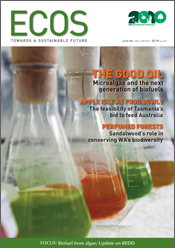
|
Published: 20 December 2010
Sustainable enterprise: Real-time purchasing power
Let’s imagine you could walk into a store, select a product, and instantly be able to view a rating of its health, environmental and social impacts. Would the product’s rating relative to its competitors sway your purchasing decision?

|
|
Real-time purchasing power requires shared responsibility between supplier and customer. Credit: Istockphoto
|
The concept of providing information to customers at the point of sale to encourage more informed purchasing decisions – and ultimately more sustainable consumer behaviour – is the basis of two new US-based ‘consumer social responsibility’ initiatives: GoodGuide and Walmart’s Sustainable Product Index.
GoodGuide (www.goodguide.com) is a free online consumer information service, founded and staffed by researchers. It compiles and shares authoritative information about the health, environmental and social performance of more than 70,000 food, toys, personal care and household products, and 1500 companies. This information forms the basis of an easy-to-understand rating system that evaluates product performance across a comprehensive set of metrics. Each product is given an overall score out of 10: the higher the score, the better the product’s performance.
GoodGuide uses more than 1500 variables to evaluate products and companies, providing an evidence base upon which an informed product rating can be made. In an interesting new development, GoodGuide has launched an application that can be loaded onto an iPhone or iPod Touch. When a product’s barcode is scanned via the device’s camera function, GoodGuide provides the product’s rating directly to the handheld device.
Walmart has taken a research-driven approach for its index, involving universities, retailers, suppliers and non-government organisations in the development of a single source of data for evaluating product sustainability. By making such information transparently available to suppliers, retailers and consumers alike, the retail giant aims to increase quality, reduce costs, and encourage more sustainable production and consumption practices and behaviours.
The index development process is to be rolled out in three stages over five years. The first stage sees Walmart requiring each of its 100,000 global suppliers to respond to a 15-question survey seeking information on the supplier’s performance with respect to energy and climate, natural resources, material efficiency, and people and community. This will provide Walmart with a benchmark upon which to identify challenges and opportunities in their supply chains. Through a consortium of universities, suppliers, retailers, NGOs and government agencies, Walmart and consortium participants will then develop a single, globally consistent database of information on the product lifecycle, from raw materials to disposal. The final stage is to provide customers with a convenient, easy-to-understand product rating at the point of sale based on information in the database. This will enable consumers to make more informed purchasing decisions.
Harvard academic, Professor Rosabeth Moss Kantor, suggests Walmart’s sustainable product index is a ‘game-changer’ that will ‘transform green standards from nice-to-have to must-have.’
On her blog, Prof. Moss Kantor says ‘The beauty of the Walmart innovation is that it doesn’t ask anyone to change anything except the information that is provided and received. If polluters want to keep polluting, they are free to do so, as long as they provide that data on their Walmart labels. And if consumers choose to buy from polluters whose labels they can read, they are free to do so.’
In practice, Walmart hopes that by making this information transparently available to consumers and producers, low-scoring suppliers will lift their game to avoid adverse scrutiny and damage to their reputation.
The beauty of these two initiatives is that the responsibility and accountability for a product’s production, consumption and impact footprint are shared between both participants in the transaction: the supplier and the customer.
If the relevant market forces can apply pressure on the demand and supply sides simultaneously, it will hopefully drive more sustainable practices and behaviours for everyone.
Sean Rooney is Sustainability Services Leader at Sinclair Knight Merz and former Director of CSIRO’s Sustainable Communities Initiative. Through his Sustainable Enterprise column, Sean highlights businesses and organisations that are putting sustainability theory into practice.
More information
GoodGuide: www.goodguide.com
Walmart press release: walmartstores.com/pressroom/news/9277.aspx
Rosabeth Moss Kantor, Harvard Business Review: tinyurl.com/mosskantor



